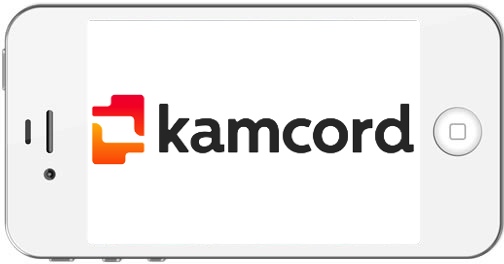Mobile games have grown to the point where players can dive into an immersive world or rack up high scores in just a few minutes from any platform. But trying to share those standout moments with others can be problematic.
Big numbers, virtual badges, and achievements all lack a sense of context, and a way for other people to know exactly how good you are. After all, what good is nabbing a high score when you can’t show off how you nearly destroyed your fingers getting it?
That’s where YC-backed Kamcord comes in. The brainchild of MIT alumni Kevin Wang, Aditya Rathnam, and CEO Matt Zitzmann, Kamcord aims to help mobile gamers easily record and share their exploits via a free SDK available to iOS game developers.
The real beauty of Kamcord is that players don’t actually have to do anything to make it work. All it takes to generate a video is to play a supported game as they usually would, while their in-game actions are quietly and unobtrusively recorded. Once the game is over, users can choose to view the newly-created replay, and share the records of their prowess (stored on Kamcord’s servers) via Facebook, Twitter, and good old-fashioned email. After a quick log-in, users can also upload those videos directly to their YouTube accounts.
But what happens when a user has to temporarily pop out of the game? The Kamcord framework is pretty clever in those sorts of situations — when a player has to take a call or suddenly shuts off the screen, the video up to that point is saved as its own clip and later spliced with the remainder once the player can get back to business.
My Kamcord-recorded high score in Count To A Billion.
At first glance, it just seems like another way for gamers to brag about their MAD SKILLZ, but Kamcord is also positioning the feature as a way for developers to help market their apps. The way the team looks at it, the more gameplay videos start worming their way around the net, the more visibility these games get. It makes sense, especially since the process of discovering new games to play is often dicey — screenshots and descriptions are great, but the ability to easily whip up a trailer for some extra visual flair certainly doesn’t hurt things.
And what of the process of actually integrating Kamcord into an iOS game? There’s a bit of a sticking point there in that Kamcord currently only works with a particular 2D game engine called cocos2d, but the team is working on getting support for the widely-used Unity3D engine up and running in due course.
“We’re at the point where the technology is quite stable,” Zitzmann said. “The average developer can get 90% of Kamcord functionality implemented in half an hour.”
So it’s simple enough to slip into a cocos2d-powered project, but simplicity is only part of the equation. Of course, the biggest question on those developers’ minds had to do with performance. No game dev worth their salt would shoehorn additional features into their game if it meant the gameplay experience as a whole would suffer as a result. Neither Zitzmann nor his colleagues would divulge how Kamcord manages to record high quality video of a gameplay session without affecting it — it’s their secret sauce, after all — but there’s little question that it works remarkably well.
As far as their plan to monetize goes, the team has been quietly knocking around a few ideas, but that’s a secondary concern for them right now. For the time being, job number one is making nice with as many iOS game developers as possible — something that they’ve already made considerable headway with.
The Kamcord team launched the beta version of its SDK back in June, and quickly saw 800 developers sign up. Of those 800, Zitzmann tells me that over 60 of those developers are currently testing Kamcord integration or are already using it. At time of writing, there are already 22 Kamcord-enabled games live in the iOS App Store — not too shabby, especially considering the team was hoping for integration into ten iOS games before the summer came to a close. Now the startup is running an iPad giveaway in order to drive more awareness to the nascent recording tool.
All that said, Kamcord isn’t without its shortcomings. Some of it is purely mechanical in nature — users can craft Facebook messages and Tweets to be sent alongside videos of their in-game domination, all videos that get uploaded to YouTube are stuck with a generic title and description depending on the game. Those players will have to log in to their accounts and manually change that stuff unless they want multiple videos with very similar metadata. What’s more, there’s also no way for users to locally save replay videos to their device.
And here’s the big bummer: Kamcord doesn’t yet work with Android, though I’m told it’s definitely on the roadmap. Still, it’s early days for the team, and if there’s one thing these guys can count on, it’s that there’s surely no shortage of people looking for another way to show off their gaming skills.
